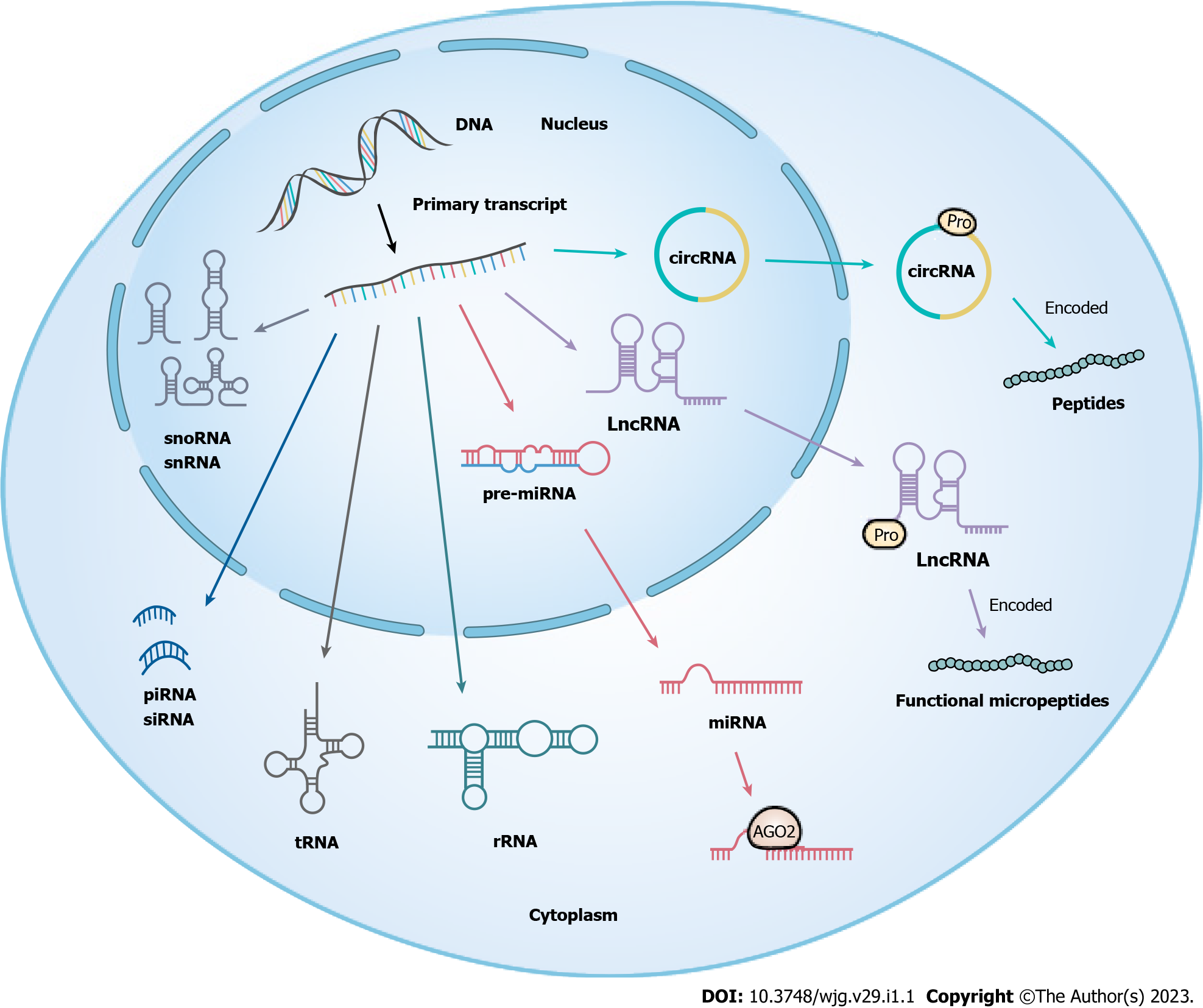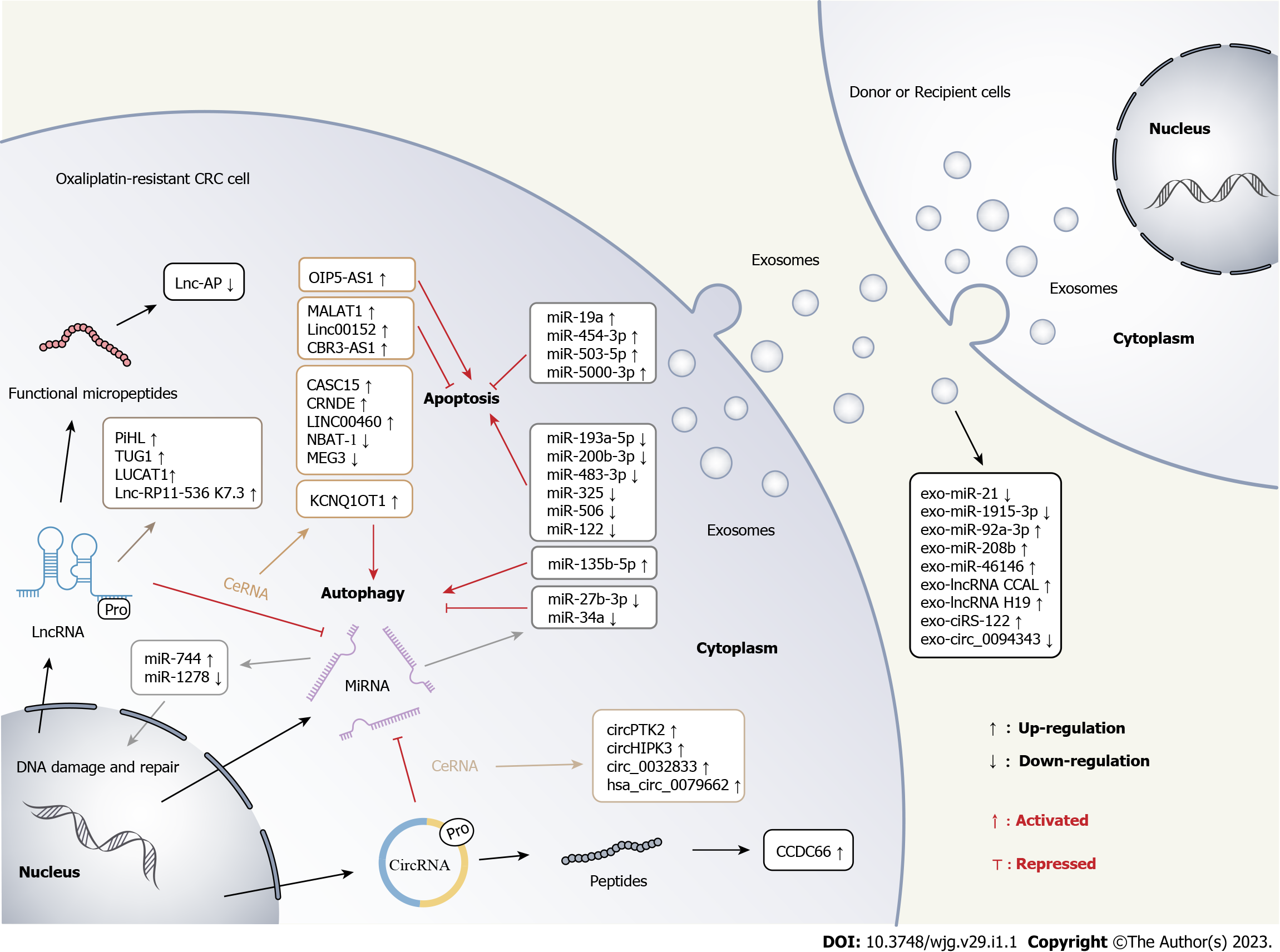Copyright
©The Author(s) 2023.
World J Gastroenterol. Jan 7, 2023; 29(1): 1-18
Published online Jan 7, 2023. doi: 10.3748/wjg.v29.i1.1
Published online Jan 7, 2023. doi: 10.3748/wjg.v29.i1.1
Figure 1 Classification of non-coding RNAs.
Non-coding RNAs can be divided into either small ncRNAs (< 200 nucleotides) or long non-coding RNAs (> 200 nucleotides) based on their length. Among these, small ncRNAs consist of ribosomal RNAs, transfer RNAs, small nucleosome/spliced RNAs, microRNAs, small interfering RNAs, PiWI-Interacting RNAs, and small nucleolar RNAs. Furthermore, the circular RNAs generated in the splicing process of pre-mRNA are also considered to be special ncRNAs. ncRNAs: Non-coding RNAs; lncRNAs: Long non-coding RNAs; rRNAs: Ribosomal RNAs; tRNAs: Transfer RNAs; snRNAs: Small nucleosome/spliced RNAs; miRNAs; MicroRNAs; siRNAs: Small interfering RNAs; piRNAs: PiWI-Interacting RNAs; snoRNAs: Small nucleolar RNAs.
Figure 2 Overview of the mechanisms by which several non-coding RNAs exert oxaliplatin resistance in colorectal cancer.
Various microRNAs, long non-coding RNAs, and circular RNAs are up-regulated or down-regulated in colorectal cancer and mediate oxaliplatin resistance via a multitude of mechanisms. These mechanisms include acting as competing endogenous RNAs, generating encoded peptides, regulating autophagy, inducing apoptosis, and interfering with DNA damage and repair. In particular, several non-coding RNAs have been demonstrated to confer oxaliplatin resistance in colorectal cancer cells via exosomes. CRC: Colorectal cancer; lncRNAs: Long non-coding RNAs; miRNAs; MicroRNAs; circRNAs: Circular RNAs.
- Citation: Luo ZD, Wang YF, Zhao YX, Yu LC, Li T, Fan YJ, Zeng SJ, Zhang YL, Zhang Y, Zhang X. Emerging roles of non-coding RNAs in colorectal cancer oxaliplatin resistance and liquid biopsy potential. World J Gastroenterol 2023; 29(1): 1-18
- URL: https://www.wjgnet.com/1007-9327/full/v29/i1/1.htm
- DOI: https://dx.doi.org/10.3748/wjg.v29.i1.1










